 Iran’s Attack on Israel
Iran’s Attack on Israel
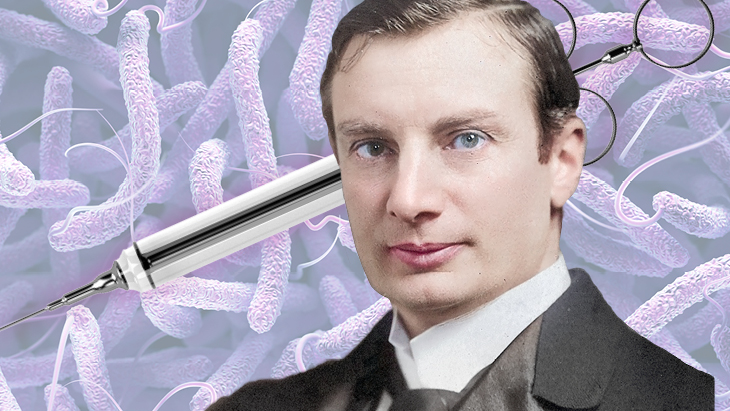

14 min read
Who was Mordechai Wolff Haffkine, a Ukrainian Jew, and why was he compared to Alfred Dreyfus?
Most people can identify the developers of the world’s most important vaccines, including Louis Pasteur (rabies, anthrax), Edward Jenner (smallpox), and Jonas Salk (polio and influenza), but the name Mordechai Wolff (Waldemar) Haffkine, an Orthodox Jew who is credited with the development and use of vaccines against cholera and bubonic plague, has been forgotten, even though he arguably saved far more lives than they did.
He was hailed as “the Jewish Jenner”; he was characterized by Joseph Lister, the pioneer of antiseptic surgery, as “a savior of humanity”; and, in Rabbi Joseph Hertz’s second edition of the Soncino Chumash, the influential chief rabbi of the British Empire noted that he was “a famous scientist.”
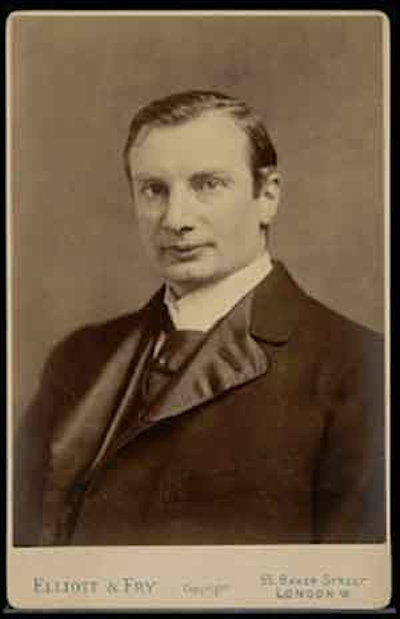 Haffkine portrait
Haffkine portrait
The son of a secular merchant father and a devoutly Orthodox mother born in what is now Ukraine, Haffkine (1860-1930) was raised by his maternal grandmother after his mother died when he was a young child, and it was through her that he developed strong Jewish feelings. A young founder of the Jewish League for Self-Defense in Odessa, he was injured while defending a Jewish home during the Odessa pogrom of 1881.
He was barred from a professorship because he refused to convert to the Russian Orthodox Church, and the fact that he had always been openly proud of his Judaism.
Haffkine commenced his scientific career as a protozoologist and protistologist at the University of Odessa in 1879 under Elie Mechnikov, one of the “fathers of immunology” who shared the Nobel Prize in Physiology or Medicine with Paul Ehrlich. He was expelled from the university in 1882 after protesting Mechnikov’s forced resignation for being Jewish but, after waging a difficult battle against the administration, he was granted his Doctor of Science degree in 1884. He was barred from a professorship because he refused to convert to the Russian Orthodox Church, and the fact that he had always been openly proud of his Judaism, very rare at that time and in those circles, certainly did not help him.
After leaving Odessa in 1888 for a brief teaching job in Geneva, he followed Mechnikov to Paris, where he joined his mentor and Louis Pasteur at the newly established Pasteur Institute.
Determined to prove the efficacy of his vaccine, he decided that the best place to do so was in India, where hundreds of thousands of people were dying from cholera.
In the early 1890s, when one of the five great 19th-century cholera pandemics devastated Asia and Europe, Haffkine’s interest turned to practical bacteriology and he focused his research on developing a cholera vaccine. He produced an attenuated form of the cholera bacterium and risked his life by self-administering the first dose on July 18, 1892. He reported his successful findings to the Biological Society two weeks later, but his discovery was not generally accepted by his senior colleagues.
Determined to prove the efficacy of his vaccine, he decided that the best place to do so was in India, where hundreds of thousands of people were dying from the ongoing cholera epidemic. In early 1893, he finally obtained permission from the British authorities to go to India and test his vaccines at the deltas of the Ganges and Brahmaputra Rivers, the primary source for the spread of cholera, but he quickly encountered four daunting problems.
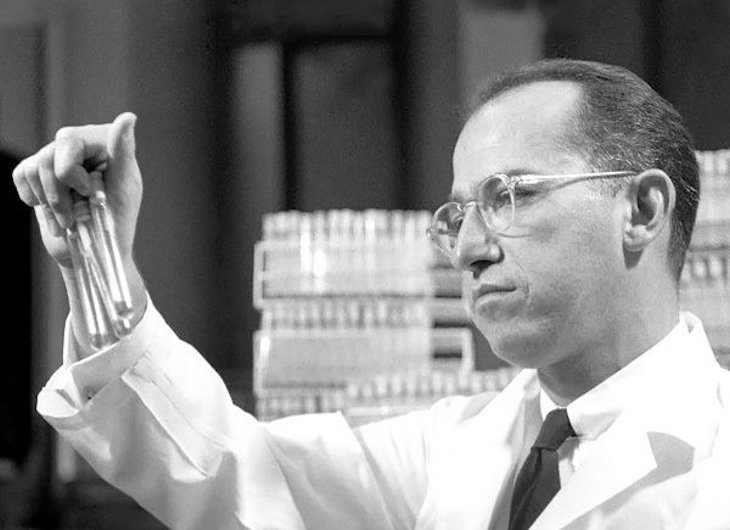
First, the British directed that all participation in his two-shot regimen trials be voluntary, effectively thwarting his ability to select a proper balance of subjects and controls so fundamental to scientific analysis.
Second, relentless and vociferous protests by English anti-vaccinationists ultimately took their toll on the British military command and caused a decreased cooperation with – and sometimes obstruction of – Haffkine’s efforts.
Third, when Haffkine was grudgingly granted permission by the British government to test his vaccine in India, he received no financial support from either the British or Indian government and he had no choice but to fund the entire operation by himself.
But the principal problem proved to be Haffkine’s own misunderstanding of the geographical unpredictability of cholera. He planned to choose a village with a history of cholera, vaccinate half the people, and wait for the next outbreak to test the results, but he soon discovered that he was unable to find the disease in sufficient concentration to make his testing meaningful. As he documented in his records, although he was able to vaccinate more than about 20,000 people throughout northern India that year, “no cholera appeared in their midst to show whether the vaccine was of value or not.”
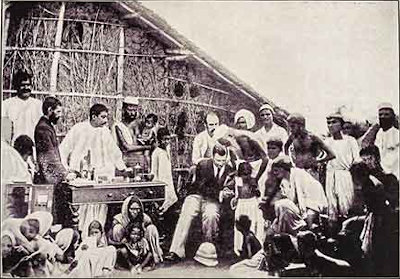 Old photo of Haffkine vaccinating villagers in Calcutta.
Old photo of Haffkine vaccinating villagers in Calcutta.
Haffkine’s big break came in early 1894 when a medical officer in Calcutta invited him to examine cholera bacilli in a water tank in an isolated village where everyone drank from a shared water source. When cholera broke out in the village, the overwhelming majority of the deaths were among the unvaccinated. Calcutta health officials agreed to finance a wider trial, and he became the first person in history to bring laboratory medicine into the slums of a tropical country, as he traveled across India spending entire days vaccinating as many people as possible.
By the time he was forced to return to England in autumn 1875 because he had contracted malaria, he had vaccinated some 42,000 people in the face of monumental hardships, including surviving an assassination attempt by Muslim fanatics. Two years after his return to Calcutta in 1893 to continue his work, cholera cases decreased by 80 percent amongst the vaccinated.
Working almost entirely by himself, he succeeded in developing a vaccine for the bubonic plague that was ready for testing only three months later. He first tested it on himself.
When the bubonic plague hit Bombay in October 1896 with a mortality rate double that of cholera, the Indian government asked Haffkine to assist, and he commenced work in a crude laboratory and assumed the daunting task of developing the world’s first vaccine against plague. Amazingly, working almost entirely by himself, he succeeded in developing a vaccine that was ready for testing only three months later and, again, he first tested it on himself on January 10, 1897. Soon after he announced his successful results to the authorities, plague broke out at Bombay’s Byculla House of Correction. He conducted a controlled test there, the results of which were that the majority of deaths were among the unvaccinated.
With this astounding success, the Aga Khan provided a building to house Haffkine’s “Plague Research Laboratory” where he offered himself and thousands of members of his community for vaccination; within a year, hundreds of thousands of Indians had been successfully inoculated. At her 1897 Diamond Jubilee Honors, he was named by Queen Victoria as an Order of the Indian Empire (CIE) for his bubonic plague vaccine, and the Jewish Chronicle noted with great pride the anomaly of “a Ukraine Jew, trained in the schools of European science, saves the lives of Hindus and Mohammedans and is decorated by the descendant of William the Conqueror and Alfred the Great.”
Haffkine wanted to test his cholera vaccine in Russia, but the Russian Czarist government refused, preferring that countless thousands of peasants and laborers die rather than be treated by a Jew. Ironically, however, with the 1898 cholera outbreak raging through the Russian Empire, two of his Russian colleagues visited him in Bombay, with the result that the vaccine, called “Haffkine’s lymph,” saved many thousands of lives across Russia. By the early 20th century, the vaccine had been administered to over four million Indians.
Haffkine had many enemies, including envious and resentful “establishment” scientists and the British colonial bureaucracy, particularly the British officers who comprised most of the staff at his laboratory, who were all unhappy about a Russian Jew heading the operation. Sham, but nonetheless damaging, reports began to circulate, including rumors that he was a Russian secret agent and an enemy of the British colonial rule and reports that he had produced the vaccine with pig flesh, an anathema to both Hindus and Muslims.
 Haffkine vaccinating children
Haffkine vaccinating children
The haters soon succeeded in finding a way to ruin him when, during a mass outdoor inoculation in the Punjabi village of Malkowal on October 30, 1902, 19 villagers died from tetanus. It was quickly determined that the cause of the deaths was the failure of an Indian assistant to follow Haffkine’s established sterilization and sanitation procedures after he dropped a forceps that he was using to open the vaccine bottles and that all the deaths were from vaccines administered from this single bottle; all other subjects who had been inoculated that day were thriving.
Nonetheless, a kangaroo Indian Commission of Inquiry was convened to investigate the matter and, in what became known as “the Little Dreyfus Affair,” he was railroaded by the Commission, which determined that the bottle of vaccine had been contaminated in his lab and that he was responsible. Relieved of his title and position, he was sent back to England in ignominy.
When the Indian government finally released its full inquiry in 1906 – four years later – much of the scientific community came to his support and, on July 29, 1907, the London Times published a letter signed by ten internationally renowned microbiologists, including Sir Ronald Ross, the winner of the 1902 Nobel Prize for Physiology or Medicine. The letter cited not only the injustice of wrongfully accusing one of mankind’s and India’s “greatest benefactors,” but it also warned about the adverse repercussions that would arise out of false information eroding the public trust in vaccines.
In this regard, it is fascinating to note that once Haffkine’s vaccine had been broadly administered throughout India, discussions commenced about mandating proof of vaccination in areas of high concern, particularly at Hindu and Muslim pilgrimage sites which, due to population density, were considered the most likely places for plague outbreaks to get out of control. At the annual pilgrimage to Pandharpur in Bombay province, government authorities decided to mandate such proof of vaccination but the government negotiated with religious authorities, the hospitality industry, the railway companies, and pilgrims’ representatives.

Haffkine was finally exonerated in November 1907, when a Commission of the Lister Institute in Great Britain reversed the Inquiry Commission’s miscarriage of justice and the matter was then brought by his supporters to the British parliament. He was given permission to return to Bombay but, eager to reassume his position at the Institute, he found that it had been taken by another scientist, so he accepted a position as director in chief of the Calcutta Biological Institute. However, even after his formal exculpation, his name and reputation remained tainted because the authorities barred him from carrying out any future trials. Even when he commenced research on developing a new “devitalized” vaccine, the Indian government denied his repeated applications to conduct experimental trials. Limited to conducting theoretical research, he worked for the Institute until 1915, when he reached the age of mandatory retirement and returned to France.
While there is no “smoking gun” evidence that antisemitic animus played a role in the years-long miscarriage of justice in the Little Dreyfus Affair case, there does not seem to be any other reason to explain the course of events in the matter and why, even when he was officially vindicated, he was prevented from continuing his work – the very work that had saved hundreds of thousands of lives.
Haffkine was a proud Orthodox Jew with close relationships with many Jewish and Zionist leaders, but it was his friendship with Baron Edmond Rothschild that gave him the idea for a plan to resettle Jews in the land of Israel that involved the purchase of land by wealthy members of the Jewish community. In 1898, he presented his plan to his friend, Aga Khan III, but when the Aga Khan brought the proposal to Sultan Abdul Hamid II, it was summarily rejected.
Although Haffkine personally donated funds to purchase land in Israel, he was not a political Zionist who considered a Jewish state as necessary for Jewish survival; rather, he credited the spiritual leaders produced by the yeshivot with the unlikely Jewish survival through two thousand years of bitter exile and oppression. Accordingly, he devoted massive financial resources to the support of studies at yeshivot and Talmud Torahs; in particular, he established the Haffkine Foundation to foster Jewish education in Eastern Europe with a focus on reaching “enlightened” secular Jews, which still exists and still supports various religious institutions.
Haffkine‘s wide-ranging Jewish activism included drafting a petition for the civil and religious rights of the Jews of Eastern Europe, which was presented at the Versailles Conference; founding the Society for the Return of the Hebrew Language; supporting the Jewish Free School in Calcutta; pursuing a plan to found a microbiological institute in Eretz Yisrael; working to establish a faculty of Jewish studies at the Hebrew University in Jerusalem; and serving on the boards of trustees of both YIVO and the Alliance Israelite.
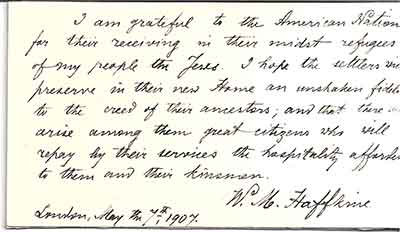 Haffkine’s original correspondence thanking the U.S. for its treatment of Jews.
Haffkine’s original correspondence thanking the U.S. for its treatment of Jews.
Haffkine also dedicated himself to helping Jewish refugees immigrate to the U.S. Well aware of the threat of worldwide antisemitism, particularly with the oppression of his fellow Jews in his native Russia, and having personally experienced antisemitism which all but destroyed his career and accomplishments, he was deeply appreciative of the uniqueness of the United States and how his co-religionists were being treated there. In this beautiful and rare May 7, 1907 note, he writes:
I am grateful to the American Nation for their receiving in their midst refugees of my people, the Jews. I hope the settlers will preserve in their new Home an unshaken fidelity to the creed of their ancestors; and that there will arise among them great citizens who will repay by their services the hospitality afforded to them and their kinsmen.
After his retirement in 1915, Haffkine decided to travel to the United States to observe and to personally experience Jewish life there. It was during this trip that he wrote an article for the Menorah Journal called “A Plea for Orthodoxy” (1916), in which he advocated for traditional religious observance, decried the lack of such observance among “enlightened” Jews, attributed all of science to Jewish piety and learning, and stressed the importance of the Torah’s teachings and Jewish communal life. Alarmed by much of what he saw across America, he concluded that assimilation was a far greater threat to the survival of the Jewish people than persecution.
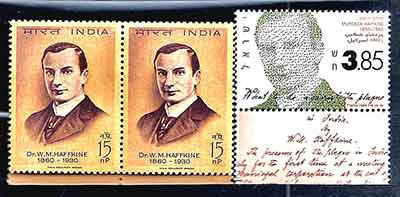 Stamps honoring Haffkine. (L) India (1964), (R) Israel (1994)
Stamps honoring Haffkine. (L) India (1964), (R) Israel (1994)
In 1925, the Indian government renamed the Parel lab “The Haffkine Institute,” which today serves as a respected teaching institution in the field of biological sciences, undertakes specialized testing for pharmaceutical and other health-related products, and is a leader in offering basic and applied biomedical science services. Pursuant to his will, the Haffkine Foundation for the Benefit of Yeshivot was established and fully funded and, although he never visited Israel, he bequeathed his extensive personal archive to the National Library of Israel. His memory was later commemorated by the planting of 1,000 trees in the Kennedy Forest near Jerusalem.
Finally, one of the original cholera vaccine glass ampoules from his first batch was found and displayed at the Migdal David Museum. This amazing historical artifact was wrapped in a little package containing a September 1, 1892, note written by Haffkine just a few months after he announced his vaccine and declared that the ampoule contained the antidote for cholera.
